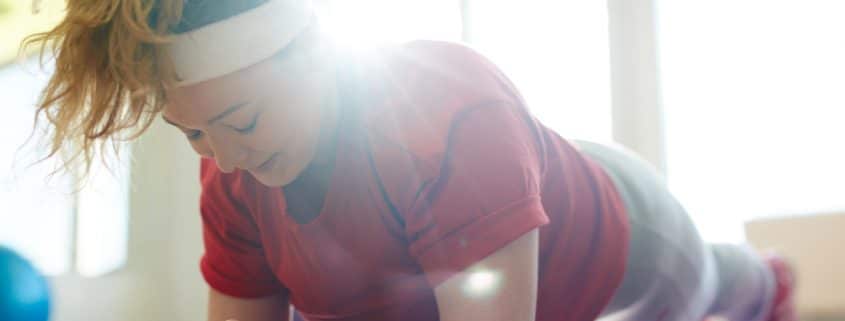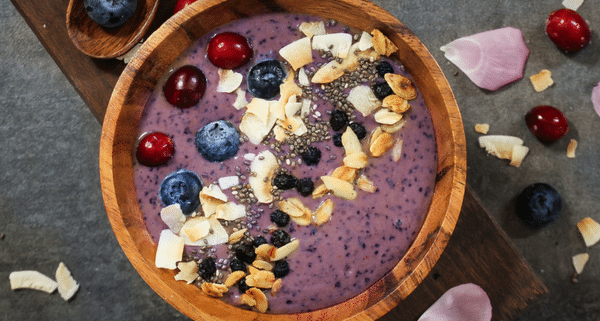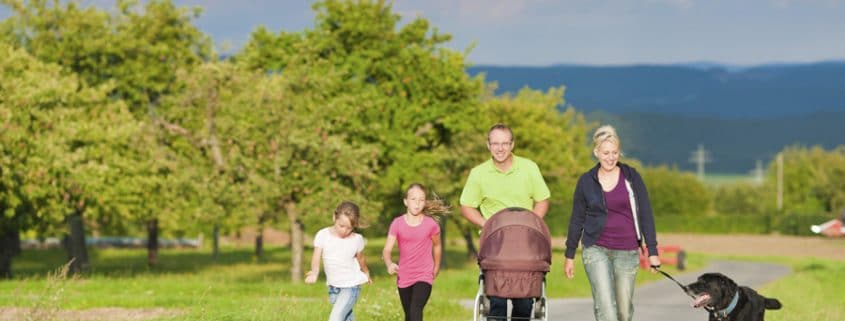Working shifts and late nights

When you’re working a shift-schedule or working late nights, your physical activity, sleep and diet habits can really suffer. People who work shifts may find it hard to keep up a regular exercise and sleep schedule, putting shift workers at higher risk of weight gain, and all sorts of health disorders, from heart disease to cancer (National Sleep Foundation).
EXERCISE
No matter how busy your schedule may seem, even small bursts of physical activity will be beneficial to your health. Not only can it help improve your fitness and sleep, but also decrease your risk of disease and make you feel better.
Here are some tips to make it easier for you to stay active even with an irregular or shift work schedule.
- Try to take walks before or after work, or even during your breaks. This is a soothing activity which can help with not only your physical health but also your mental health.
- If you’ve been standing for long periods of time; get up and move, whether it’s a light stretch or some short spurts of movement, such as push-ups or some squats. Read our blog post on Movement Snacks for more ideas.
- We take the lift or escalator without thinking but if it’s just a few floors – really make an effort to take the stairs whenever you can.
- If you drive, park further away so you have to walk more. If you take Public Transport, get off a stop or two early.
- If you do have time to workout, try doing it before work as it’s likely you’ll be too tired afterwards. This will give you a sense of accomplishment before your day/night begins and give you some energy to get through your shift.
- Keep a pair of light weights, a stability ball or resistance bands at your desk and try to use them for at least 10 minutes during your breaks or throughout your shift.
- Find a gym that offers 24-hour access so that you can go whenever it suits you.
- Try short sharp bursts of exercise over long workouts which might be hard to squeeze in for those of you working longer shifts. Log-in to Ritualize to try our 7-minute workouts.
It’s important to remember that every little bit of movement counts!
SLEEP
The sleep-wake cycle appears to have evolved for humans to be awake during the day and to sleep for approximately eight hours at night. There is a small part of the brain called the ‘circadian clock’, which monitors the amount of light you see, so in the evening, when the light starts to wane, your clock notices and prompts a flood of a brain chemical called melatonin, which gives the body the signal to fall asleep. Overnight, melatonin levels remain high. They drop at daybreak and remain low during the day. A person working the night shift, which causes disruption to the circadian rhythm, is at greater risk of various disorders, accidents and misfortunes.
So if you’re a shift-worker or regularly working late, what can you do to help improve your sleep?
- Try not to work a number of night shifts in a row. You may become increasingly more sleep-deprived over several nights on the job. You’re more likely to recover if you can limit night shifts and schedule days off in between.
- Avoid frequently rotating shifts. If you can’t, it’s easier to adjust to a schedule that rotates from day shift to evening to night rather than the reverse order.
- Keep your workplace brightly lighted to keep yourself alert. If you’re working the night shift, expose yourself to bright light when you wake up, such as that from special light boxes, lamps, and visors designed for people with circadian-related sleep problems, Being exposed to bright light when you start your ‘day’ can help train your body’s internal clock to adjust.
- Limit your caffeine intake. Drinking a cup of coffee at the beginning of your shift will help promote alertness, but don’t consume caffeine later in the shift or you may have trouble falling asleep when you get home.
- Avoid bright light on the way home from work, which will make it easier for you to fall asleep once you hit the pillow. Wear dark, wraparound sunglasses and a hat to shield yourself from sunlight. Don’t stop to run errands, tempting as that may be.
- Use blackout blinds or heavy curtains to block sunlight when you sleep during the day. Even if your eyes are closed, the sunlight coming into the room tells your brain that it’s daytime, and that can really impact your ability to sleep and stay asleep for the time that you need.
- Try Box Breathing to help unwind after shifts. It is a simple technique to help you manage stress, calm your nerves, reduce anxiety and can improve your sleep. Check out our tutorials and a series of guided breathing sessions.
DIET
When you work shifts, you may find it hard to know when and what to eat. Here are some tips on how to manage a healthy diet:
- Eat your “main meal” before going to work, as eating large meals during the night can cause heartburn, gas, or constipation. Then have smaller meals and healthy snacks during your shift and before bed.
- Have a light snack before bedtime. It’s hard to fall asleep when you’re too hungry or too full. If you’re still hungry after work, eat a small healthy snack before bedtime. Try a bowl of whole grain cereal with milk or a piece of whole grain toast with jam. If you’re too full at bedtime try cutting out a snack during your shift.
- Pack your own healthy snacks. It can be difficult to find healthy snacks during the afternoon and night shifts. The cafeteria may be closed. Vending machines may only carry salty or high-fat snacks and high-calorie sugary drinks. Examples of good snacks are an apple, a banana or a handful of nuts with low in sugar yoghurt.
- Avoid fatty, fried or spicy foods. Foods such as hamburgers, fried chicken and spicy chilli may lead to heartburn and indigestion. Eating too much processed and trans fat can also increase your risk of heart disease and type 2 diabetes. For information on healthy fats, check out our blog post.
- Avoid fast food, no matter how easy and accessible it is. Try to meal prep at the start of each week, if you’re finding it difficult to prepare healthy food every day.
- Avoid sugary foods and drinks. You may feel a quick boost of energy after having a chocolate bar or sugary soft drink. This feeling doesn’t last long and you may experience low energy levels later on. Enjoy nutritious snacks and beverages instead to stay alert and keep your energy up.
- Take your time eating. Don’t rush when you eat. You deserve your break, so enjoy every single bite of your meals and snack! If possible, eat with your co-workers for some company.
- Stay well hydrated. Drink plenty of water to prevent dehydration. It may help you to stay alert and not feel so tired during your shift. Keep a water bottle nearby and take sips even before you feel thirsty. Low-fat milk, tea or herbal tea are other nutritious beverages that you can drink. Watch the amount of 100% fruit juice you drink because the calories can add up quickly.
- Avoid alcohol after work and when you get home. A drink may make you feel more relaxed, but alcohol can disturb your sleep.
REFERENCES:
https://www.livestrong.com/article/530503-the-best-time-to-workout-if-you-work-a-night-shift/
https://www.ncbi.nlm.nih.gov/pmc/articles/PMC2784228/
https://sleepfoundation.org/shift-work/content/living-coping-shift-work-disorder
https://www.sciencedirect.com/science/article/pii/S1389945709000094
https://www.ncbi.nlm.nih.gov/pmc/articles/PMC5241621/
https://www.betterhealth.vic.gov.au/health/healthyliving/shiftwork
https://www.webmd.com/sleep-disorders/features/night-shift-sleep#1
http://www.ohsrep.org.au/hazards/fatigue,-impairment-and-shift-work/shiftwork-health-effects
Bodyweight exercise

No gym? No equipment? No problem! It’s false to believe that we need gyms and expensive equipment to get a good workout in. A simple and effective approach to exercise is to use your own bodyweight. Simply put, it’s an exercise that uses the body as a form of resistance to work against gravity. It’s completely free, accessible and highly effective.
There’s nothing new or fad-like about Bodyweight Training. There are records of ancient Greeks, Romans and Egyptians using this method and it’s still used in military training for the same reasons. What Bodyweight Training does, in particular, is it incorporates core stability and stabilisation of the joints relative to the person’s body weight. Compared with traditional weight training, you won’t build muscle mass, but you can gain strength relative to your bodyweight.
Today, some common approaches to bodyweight training are the traditional squats, push-ups and lunges. Yoga is also a form of bodyweight training, but there are also hundreds of others that work the whole body in a functional, 3-dimensional way, not just isolating one or two muscle groups. At Ritualize, we use bodyweight workouts which can be done anywhere, anytime. After just 4 minutes your heart-rate will increase and you’ll feel like you’ve done an hour at the gym! Here’s an example of what you can do at home.
Take 4 – 8 minutes to try our Body Weight and ZUU workouts
To try our Bodyweight Workouts from Level 1 (beginner) to Level 5 (advanced) log-in and go to https://au.ritualize.com/workouts on your desktop or go to the Learn-Workouts section of your app. Or check out our 4-minute Bodyweight exercise video or our 8-minute Bodyweight exercise video!
Our Movement Snacks are a form of bodyweight exercises. These are short bursts of exercise you can do at work or home to break up a long stretch of sitting.
While there is no ‘best’ way to exercise for everyone, bodyweight exercise offers so many benefits. The top benefits being it can be done anywhere and it’s free. Given recent research is associating exercise and physical activity with better quality of life and health outcomes, it’s a great way to gain these benefits even if you are time poor.
Let’s Focus on Fructose
 Fructose – or ‘fruit sugar’ is found not only in fruit but also in small amounts in some vegetables, table sugar and honey. Fructose is a hot topic in the media and with good reason. We’re eating way too much of it and our bodies are not designed to cope with these large quantities. However, there are a lot of fad diets and opinions on how to manage our fructose consumption, which can be confusing. We’re here to give you sound information on this highly talked about sugar
Fructose – or ‘fruit sugar’ is found not only in fruit but also in small amounts in some vegetables, table sugar and honey. Fructose is a hot topic in the media and with good reason. We’re eating way too much of it and our bodies are not designed to cope with these large quantities. However, there are a lot of fad diets and opinions on how to manage our fructose consumption, which can be confusing. We’re here to give you sound information on this highly talked about sugar
The only fructose in the diet of our caveman ancestors was in the limited supply of honey, berries and other seasonal fruits. Today, the majority of our fructose consumption doesn’t come from fruit. It comes from the processed, convenience foods we have at our fingertips. Things like breakfast cereals, yogurt, soft-drinks, sports drinks, cakes, sweets, biscuits, store-bought pasta sauce and tomato sauce (and that’s just scratching the surface). It’s hard to avoid!
The association between sugar, obesity and disease is supported by the high intakes of sugar which health surveys are indicating. Whether fructose is the cause of this or just one of the factors of lifestyle choice, is debatable. However, it’s certainly not helping and that is something that can’t be argued.
So, what’s the issue with fructose?
To start with, a small amount of fructose is metabolised in the liver and is eventually stored as liver glycogen for energy, which is great if you’re very active. The problem is, most of us aren’t having a small amount so the liver ends up converting it to fat.
Not only do high levels of fructose lead to the synthesis of fat, they also fail to stimulate the hormone Leptin, which is responsible for sending messages to the brain that we’ve eaten enough and feel full. This means eating a high fructose diet can lead to overeating because, despite the amount we’re consuming, we don’t feel full and will end up overeating.
What about whole fruit?
With the media focus on fructose, many fad diets and so-called ‘experts’ have demonised fruit due to the fructose they contain. It’s important not to mistake low levels of fructose as the problem as it’s high levels that the liver can’t handle. Unless your body has problems absorbing fructose, eating 1-2 whole, fresh fruit each day is an important source of fibre, vitamins and minerals the body needs.
Does that include fruit juice?
So many of us grew up starting the day with a glass of orange juice and many are now offering the same to their kids under the guise of it being healthy. A glass of juice may offer vitamins, but through processing the fruit to juice, the majority of fibre is extracted and what you are left with is a glass of fructose. With its high levels of fructose, fruit juice is a treat food. Smoothies use the whole fruit, so are a better source of fruit than juicing. Many people now process the whole fruit with a bit of water to enjoy a glass of juice.
Which foods contain the highest and lowest amounts of fructose?
A good source of guidance on the foods that are highest and lowest in fructose can be found at this site: www.food-intolerance-network.com. As this site points out, however, some foods that are high in fructose can generally be tolerated better than others, partly due to the amount of glucose and other nutrients it is combined with.
Activate your Genes
 We have all heard of exercise is important and that a sedentary lifestyle has been linked to diseases. Recent evidence has shown that an active lifestyle can increase your life by up to 9 years.
We have all heard of exercise is important and that a sedentary lifestyle has been linked to diseases. Recent evidence has shown that an active lifestyle can increase your life by up to 9 years.
The World Health Organisation offer guidelines on physical activity which are detailed below but first it helps understand a little about the evolution of our species in order to understand why the way we move (as opposed to just doing any exercise at all) is so important.
Click here or scroll down to view the infographic
The way genes adapt to a changing environment is to mutate. Our species, ‘homo’ has been around for about two million years, with modern humans (homo sapiens) existing for around 200,000 years. The last significant gene that mutated (called the M168), occurred 45,000 to 50,000 years ago!
Since that time, there have been a few mutations, such as those to allow us to digest grains and dairy, but all in all, our genome hasn’t changed. However, our environment has changed (but we haven’t adapted to it).
Our ancestors moved a lot – today, however, many of us work in offices, call centres and due to our increasingly sedentary lifestyle, we move a lot less.
Steps
To be in line with our hunter-gatherer predecessors, we would need to take between 18,000 and 22,000. In fact, the average Australian and British office worker take just 3,000 to 5,000 steps per day. This is a significant shortfall and our health is suffering as a result.
Exercise is a powerful driver of gene expression and the famous American researcher and cardiologist Frank Booth once said,
‘We know of no single intervention with greater promise than physical exercise to reduce the risk of virtually all chronic diseases simultaneously’.
Incidental exercise
However, before you bring up lack of time to get to the gym, it’s important to understand that physical activity does not just mean an hour of sport/gym so many times a week or hitting a high step count. Both the global and Australian guidelines recommend those 18-64 years od:
- Be active each day
- Accumulate 15–300 minutes of moderate intensity each week
- Accumulate 75-150 minutes of vigorous intensity a week
- OR an equivalent of both moderate and vigorous
- Do muscle strengthening activities at least 2 days each week
So, what does all this mean? Many of us are relying on 10,000 steps each day for health benefits, so where does that fit in with the recommendations? And what does ‘be active everyday’ look like for you?
To simplify things, we have created rituals around ‘Active Minutes’ to minimise the gap between 10k steps and vigorous exercise. We show you the reduction you achieve to your BioAge from movement in the shape of the ‘Active Minutes Ritual’ (this encompasses steps, movement snacks and high/moderate intensity activity) rather than relying on calculating your activity themselves.
A few ideas to help you increase your active minutes:
- At a minimum, take 10,000 steps per day (or 70,000 a week). A great way to keep track is with a device such as a Fitbit, Garmin or Jawbone Up.
- Introduce quick bursts of movement throughout the day (what we like to call Movement Snacks). Use TV advert breaks to do squats, push-ups or 30-second sprints.
- Do three to five workouts per week – ideally a combination of vigorous activity and strength sessions. If you don’t view yourself as a ‘workout person’ don’t worry, workouts can be short and sharp and can be completed anywhere without equipment – our timed Ritualize workout videos are a great start!
- Don’t sit for prolonged periods, as this along is a risk for chronic disease. Ensure you get up and move a little every 30 minutes or so.
What’s your personal target?

See how many active minutes you need to hit to reduce your BioAge each day by clicking Active Minutes on your Ritual Board and you’ll find it at the top of the page (on both app and desktop). What’s important for many people is you don’t need to be going to the gym for an hour every day to gain benefits of physical activity – all movement counts!
Acts of Kindness
When you do something nice for someone else, it can actually make you feel better too. This isn’t just something that happens coincidentally – it has to do with the pleasure centres in your brain. Doing nice things for others boosts your serotonin, the neurotransmitter responsible for feelings of satisfaction and well-being. Like exercise, altruism also releases endorphins, a phenomenon known as a “helper’s high” (1).

Being nice to others can also affect the actual chemical balance of your heart. Kindness releases the hormone oxytocin. According to David Hamilton, a doctor and best-selling author, “oxytocin causes the release of a chemical called nitric oxide in blood vessels, which dilates the blood vessels. This reduces blood pressure and therefore oxytocin is known as a ‘cardioprotective’ hormone because it protects the heart.” Oxytocin also helps reduce inflammation in the body. Inflammation in the body can be associated with all sorts of health problems such as diabetes, cancer, chronic pain, obesity, and migraines. Kindness can actually help manage or prevent illness (2).
Not only that, but in our busy, always-on-the-go lives, we’re constantly looking for ways to reduce stress, and kindness may be one answer. Helping others allows you to step outside of yourself and take a break from the stressors in your own life, and this behaviour can also make you better equipped to handle stressful situations (3).
Acts of Kindness can be as simple as holding the door open for a stranger, smiling at people around you, donating money to a charity, or doing a work colleague a small favour. If someone thanks you, ask them to just “pay it forward” by doing something for others.
REFERENCES:
1 https://www.quietrev.com/6-science-backed-ways-being-kind-is-good-for-your-health/
2 http://drdavidhamilton.com/the-5-side-effects-of-kindness/
3http://www.readersdigest.ca/home-garden/giving-back/4-reasons-why-being-kind-is-good-you/view-all/
SaveSave
Cold Shower Therapy
 One of the Rituals many of our Ritualize members have on their Ritual board, is to take a cold shower a few times a week. If this brings feelings of dread into your stomach, don’t stop here …. keep reading!
One of the Rituals many of our Ritualize members have on their Ritual board, is to take a cold shower a few times a week. If this brings feelings of dread into your stomach, don’t stop here …. keep reading!
You may be surprised at how beneficial taking a cold shower is. We’re talking immune boosters, mood enhancing and weight loss to name just a few.
Before we talk about the cold shower Ritual, let’s briefly delve into the science of cold emersion. Cold emersion (or what can be called cryotherapy) has shown to release noradrenaline in the brain. This is a neurotransmitter that is linked to your bodies resistance to stress, reduced inflammation and improved mood. It can even improve your brain’s ability to create new brain cells. It has also shown be effective for short-term pain reduction and has shown to help the symptoms of chronic arthritis.
And if this wasn’t enough to turn the shower handle to cold for your next shower, it has shown to increase ‘brown fat’ (a type of adipose tissue). This brown fat is different to white fat in that it produces heat by burning calories. In other words, brown fat is a calorie hungry, internal heater. One study showed that 250 extra calories were burned through brown fat after a 3-hour period of cold exposure.
Feeling down? Take a cold shower
One of the most immediate benefits of a cold shower is feeling energised and happy. This is caused by norepinephrine to be released in the brain, which is great for mood. Studies are currently being carried out on cold emersion and clinical depression, so watch this space. In the meantime, people taking cold showers, even just once a week, tell us how great they feel afterwards.
Try doing 20-30 seconds at the end of your shower. Rather than it being a sudden hit of cold, try box breathing before and during the cold shower. It really helps and after a few time, you’ll start incorporating a cold shower into your routine. The benefits feel too good to stop!
Interested in reading more about Cold Water emersion? Read our blog on a first-hand experience.






